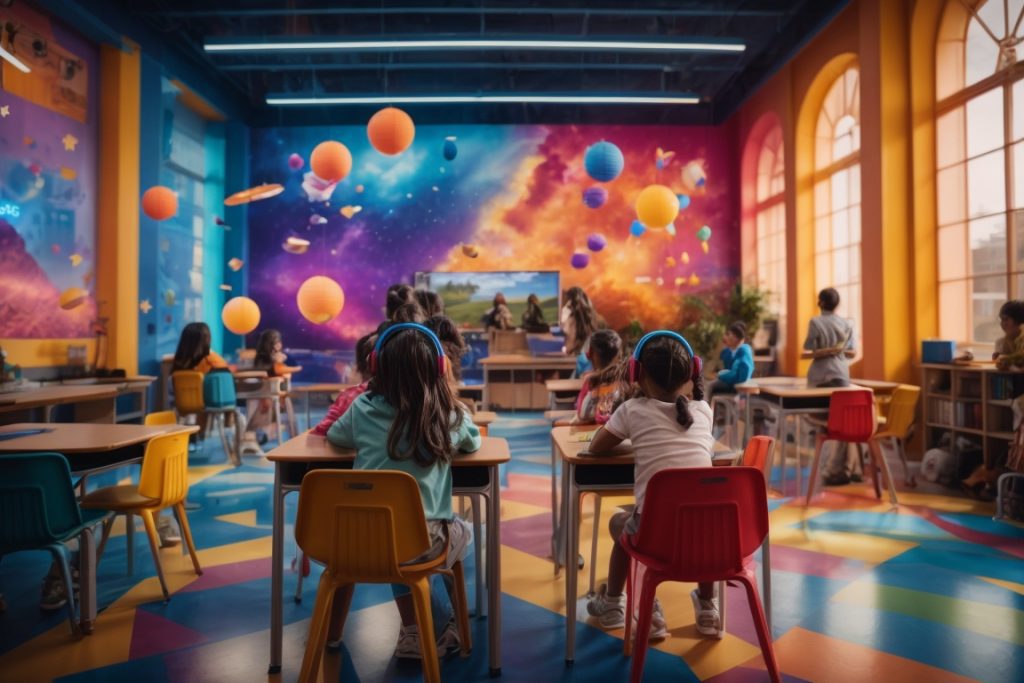
Gamification in Education: Turning Learning into an Enriching Adventure
In the realm of education, the quest for innovative methods to enhance learning and engagement has led to the emergence of gamification, a strategy that infuses learning with game-like elements to make it more fun, engaging, and effective. By incorporating elements such as points, badges, levels, and leaderboards, gamification transforms education into an immersive and motivating experience that captures the imagination of learners of all ages and backgrounds.
Unlocking the Power of Gamification
Gamification in education harnesses the power of human psychology to motivate and drive learning. By tapping into our innate desire for challenge, competition, and recognition, gamification creates a sense of excitement and accomplishment that traditional teaching methods often struggle to replicate. As learners progress through gamified learning experiences, they earn points, unlock badges, and climb levels, providing a sense of achievement and motivation that fosters a deeper engagement with the learning process.
Transforming Traditional Lessons into Gamified Adventures
Gamification can be seamlessly integrated into various subjects and learning levels, transforming even the most mundane tasks into an engaging and immersive experience. In language learning, gamified apps can turn vocabulary building into a treasure hunt, while in math, gamification can make solving equations an exciting race against time. For history enthusiasts, gamified simulations can transport students back in time, allowing them to experience historical events firsthand.
Benefits of Gamification in Education
The benefits of gamification in education extend far beyond enhancing engagement. It has been shown to:
- Increase Motivation and Engagement: Gamification taps into the inherent desire for challenge and accomplishment, making learning more enjoyable and motivating for students.
- Enhance Memory and Retention: Gamified experiences provide opportunities for hands-on learning and repeated interactions with concepts, leading to improved memory and retention of information.
- Promote Collaboration and Social Learning: Gamified activities often encourage collaboration and teamwork among students, fostering a sense of community and shared learning.
- Develop 21st-Century Skills: Gamified learning can effectively develop 21st-century skills such as critical thinking, problem-solving, creativity, and communication.
Effective Gamification Strategies
To ensure the success of gamification in education, several key strategies should be considered:
- Align with Learning Goals: Gamified activities should be carefully designed to align with specific learning objectives, ensuring that they promote the acquisition of essential knowledge and skills.
- Variety and Choice: Gamified experiences should offer a variety of activities and levels of difficulty to cater to different learning styles and preferences.
- Feedback and Recognition: Regular feedback and recognition for progress are crucial to maintain motivation and engagement.
- Integration with Traditional Methods: Gamification should complement, not replace, traditional teaching methods, creating a blended learning approach.
Gamification in Practice: Real-World Examples
Numerous examples demonstrate the effective application of gamification in education:
- Duolingo: This language learning app gamifies vocabulary building with a points system, leaderboards, and streak rewards.
- Khan Academy: Gamified badges and progress bars motivate students to complete educational challenges and track their progress.
- Minecraft Education Edition: This game-based platform allows students to explore various subjects, such as geography, history, and STEM, through engaging simulations.
Challenges and Considerations
While gamification offers significant benefits, it is important to address some potential challenges:
- Balance and Purpose: Gamification should not overshadow the core purpose of education, which is the acquisition of knowledge and skills.
- Accessibility: Gamified tools and resources should be accessible to all learners, regardless of their socioeconomic background or access to technology.
- Overuse and Distraction: Gamification should be used judiciously to avoid overwhelming or distracting students from the learning process.
Gamification has emerged as a powerful tool to transform education into an engaging, effective, and enjoyable experience for all learners. By leveraging the power of game mechanics, educators can create immersive and motivating learning experiences that enhance engagement, promote deeper learning, and develop essential 21st-century skills. As gamification technologies continue to evolve, we can expect to see even more innovative and effective applications that will further shape the future of education, making it more personalized, engaging, and relevant to the needs of the modern world.